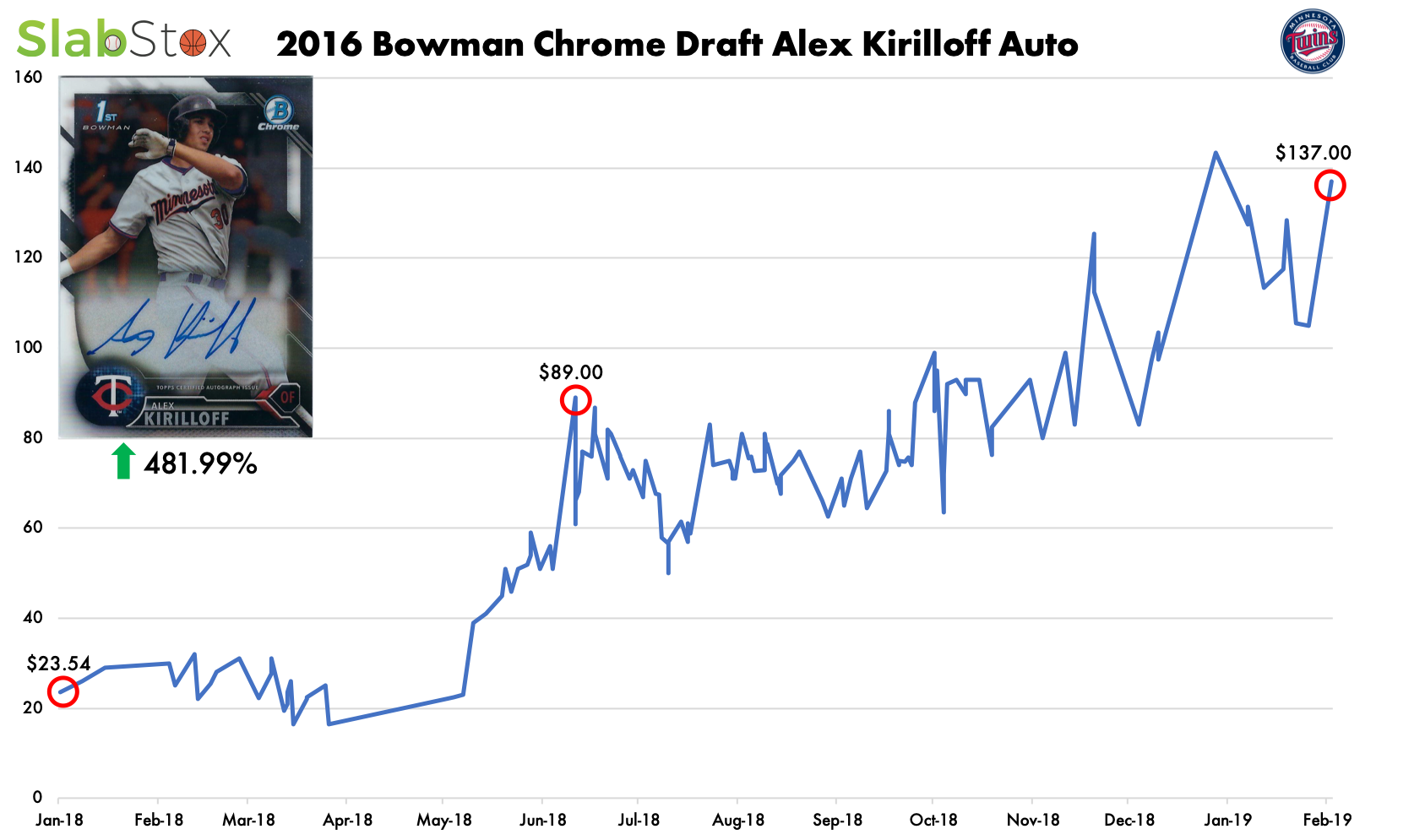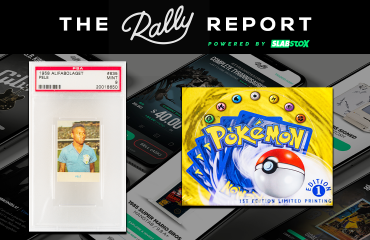Prospect Profile: Alex Kirilloff

Kirilloff is a classic right field prospect. He’s got an above average hit tool, plus power, and a plus arm. He’s not fast with very average speed and will probably be an average to below right fielder. However, it’s not his defense that boosts his card prices, so let’s dive into his stats.
Kirilloff’s stats had me all kinds of mixed up when trying to decide how I viewed him. Right away, certain stats jumped off the page as red flags, but after further study, those red flags started disappearing. There is a lot to like about Kirilloff. He ran a 15% K rate through two levels of A ball. If you’re under 20%, you’re a prospect I want to keep my eye on. He displayed good power with 71 extra base hits on the year. His isolated power (ISO = Slugging – Average) was above average (avg being .140) in both place he played. He ran a .274 ISO in A ball; that is elite. His ISO in A+ ball was .188. While not elite, it is still above average. The drop in ISO could be explained by him moving up to the Florida State League. The FSL is one of the toughest places to play as a hitter. More specifically, his home ballpark in Fort Meyers gave up .865 home runs per game, one of the lowest numbers in all of baseball (MiLB).
There were a few stats I was worried about when looking at him. For starters, he ran a really low walk rate of 5% in A+. In his three years in the minors, he has had relatively low BB%. Usually guys with really low BB% and relatively low K% swing at everything. Once they face better pitching, their weak contact % usually goes up. This is something to keep an eye on as he moves up.
A couple other things I had concerns about initially were his batting average on balls in play (BABIP) and his hit percentage per direction (spray chart). He ran a .362/.393/.550 slash line but also ran a BABIP of .399. Generally I’m looking for guys putting up good slash lines to have a BABIP in the .320 to .330 range. An unexpectedly high BABIP usually has a lot of luck mixed into it. When the lucky hits stop dropping, the BABIP goes down, and the slash lines goes down with it. I’m not as concerned though, as the list of players who ran high BABIPs and still continued to produce after their BABIP went down, is littered with great players (Trout, Bryant, Acuna, etc). That’s not to say it isn’t still concerning, but there is at least a precedent set of players still succeeding after having high BABIPs in the low minors.
Now for the second concern. Here is Kirilloff’s hit percentages in A+ ball: 42.7% pull side/ 24% center/ 33.3% opposite field.
Here’s a list of randomly selected hitters in the MLB. I’ll give their name and then percentages. I’ll also be using their career totals.
Player: pull/center/oppo
Votto: 35.5/34.1/30.4
Trout: 40.2/37.3/27.4
Harper: 38.9/34.6/26.5
Posey: 36.9/38.3/28.0
Braun: 37.4/35.5/27.2
Machado: 40.2/35.1/24.7
Butera: 39.6/34.3/26.1
B. Lawrie: 36.6/34.9/28.5
Joyce: 46.1/32.9/21.0
All of these players have one thing in common; their pull% and center% are higher than their oppo%. There is obviously good and mediocre players on this list. The point I’m getting at is Kirilloff having a high pull% and a high oppo% and a low center% is an outlier and something to keep in mind as you’re evaluating him.
Will this approach work when he moves up levels? Will he have to change, and how will it affect his stats?
I was initially concerned about this, and then I saw this 44.1/23.5/32.4. That is Vlad Jr.’s hit percentages. He also ran a higher oppo% than center% every stop of his career, except for in AA in which he hit 42.3/29.6/28.2. If it is good enough for Vlad Jr., it’s good enough for Kirilloff. At least for now.
As of right now, I view Kirilloff as .280-.290/.320-.340/.850 (AVG/OBP/OPS), average right field defense, and no value added on the bases, but none taken away either. At his peak, I think we could be looking at a guy that’s pushing .300/.350/.550. That’s a really valuable prospect, and one I’m very high on.

Investment Outlook
As an investment opportunity, I like him. His most recent non-graded base auto sold for $137. If he has another good year, he will move into the top 5, and that’s at least a $200 card. You won’t be doubling your money, but you will make a healthy sum. I would suggest buying one or two but not going overboard.
Sign up for The Daily Slab email to get the most up-to-date sports card insights straight to your inbox.



